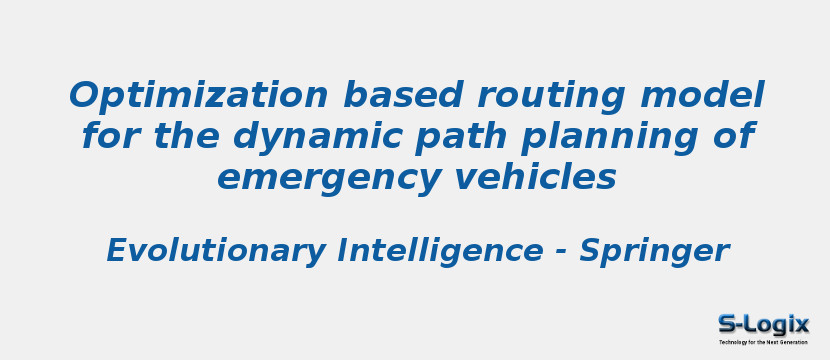Research Area: Vehicular Ad Hoc Networks
With the increasing number of traffic vehicles and urbanization, the frequencies of traffic accidents are growing exponentially. The research for routing emergency vehicles has gained significant attention in Vehicular Ad hoc Network (VANET) topology. The path planning for an emergency vehicle can avoid congestion and minimize the travel time to prevent accidents. Thus, this work proposes a dynamic path planning scheme for routing emergency vehicles. At first, the VANET is simulated and the dynamic path planning is performed after the arrival of emergency vehicles. The proposed dynamic path planning includes two steps, namely travel-time forecasting, and bi-model routing. The travel time is predicted using the Support Vector Regression model and the bimodal is employed to route the emergency vehicles optimally. The bimodal consists of two steps, such as K-path discovery and optimal path selection process. Initially, the possible K shortest path is detected from which the optimal path is selected by the proposed Exponential Bird Swarm Optimization Algorithm (Exp-BSA). The proposed Exp-BSA algorithm is designed by integrating the Exponentially Weighted Moving Average concept in Bird Swarm Algorithm (BSA). Thus, the proposed Exp-BSA determines the optimal paths based on the devised fitness function, and the selected paths are suggested to emergency vehicles for faster routing. The performance of the proposed dynamic path planning for an emergency vehicle based on Exp-BSA is evaluated using three simulation setups based on the metrics, such as distance, average traffic density, average speed, and travel time. Also, the performance of the proposed method is compared with the existing methods, such as SFLA-KC, K-Path, and BSA. From the results, it is exposed that the proposed Exp-BSA method achieves the overall best performance than the existing methods with a minimal distance of 48.404 m, an average traffic density of 0.015 min, an average speed of 1.392 m/s, travel time of 19.608 s.
Keywords:
Author(s) Name: Cyriac Jose & K. S. Vijula Grace
Journal name: Evolutionary Intelligence
Conferrence name:
Publisher name: Springer
DOI: 10.1007/s12065-020-00448-y
Volume Information:
